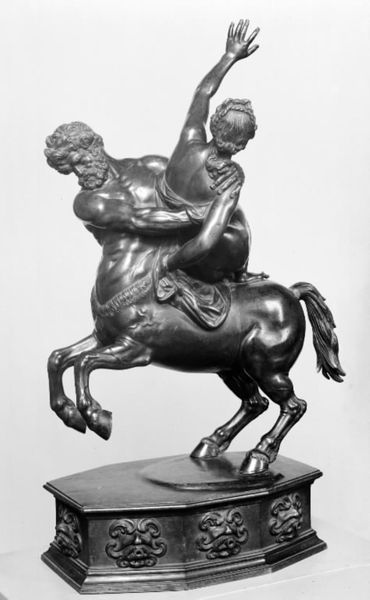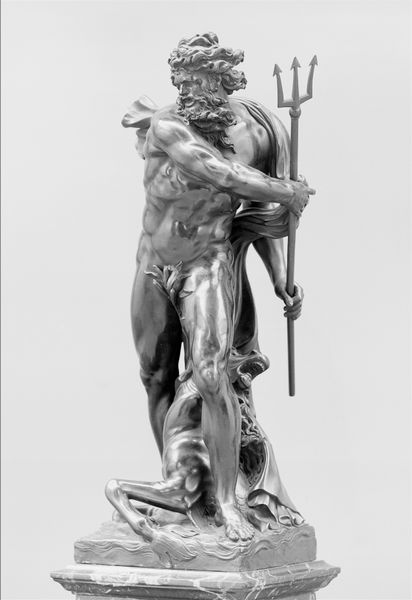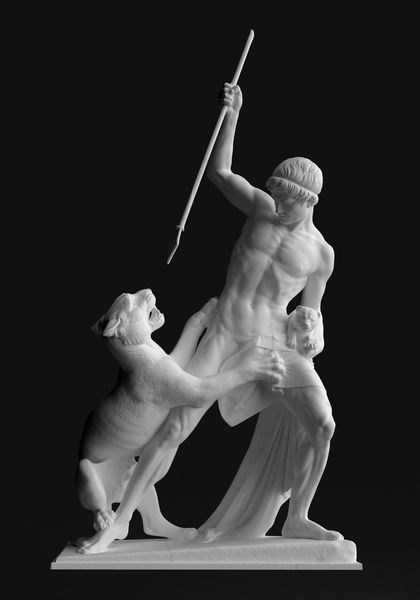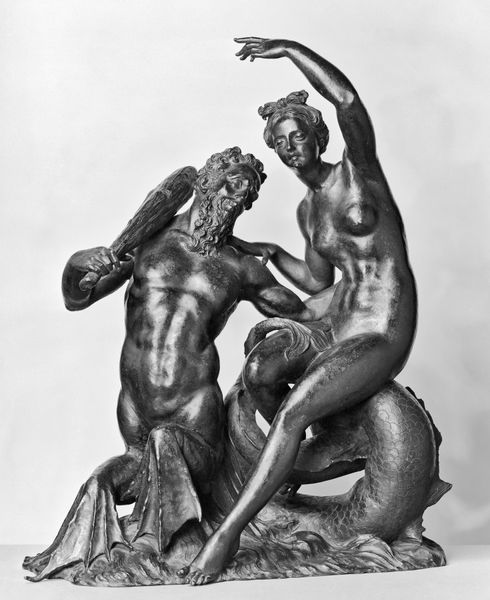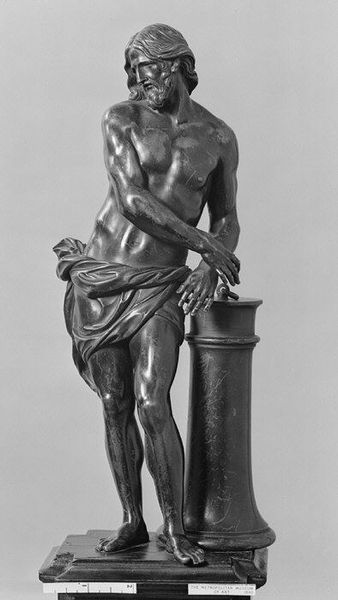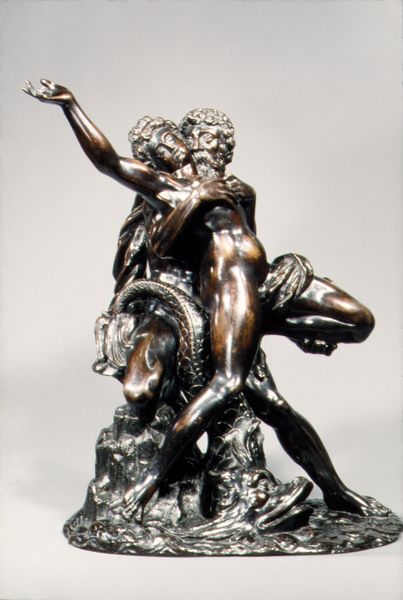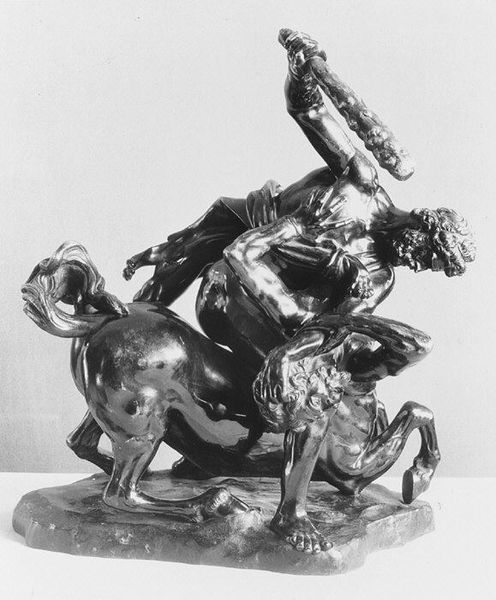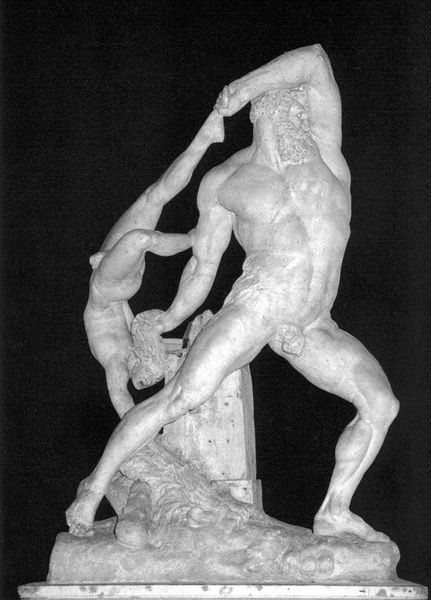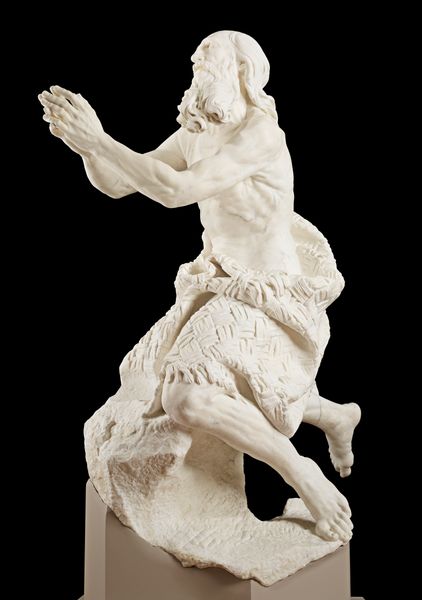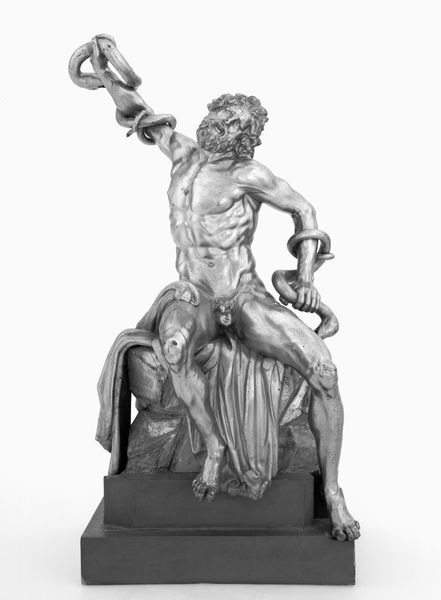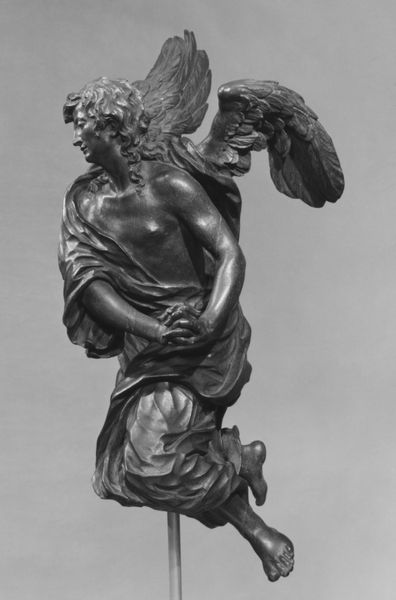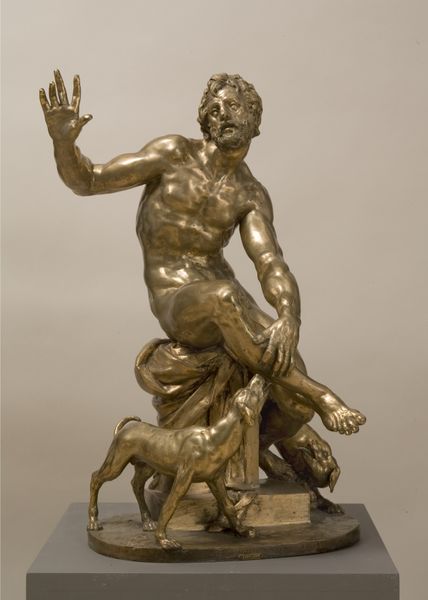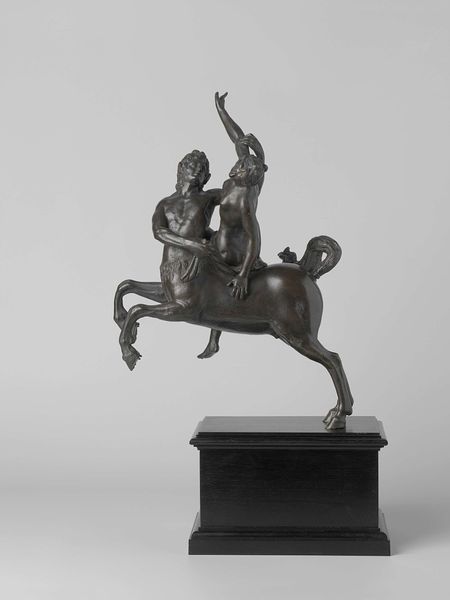
bronze, sculpture
#
sculpture
#
bronze
#
mannerism
#
figuration
#
sculpture
#
history-painting
Dimensions: 39.5 cm (height) x 29 cm (width) x 20 cm (depth) (Netto)
Curator: This bronze sculpture, rendered in the Mannerist style, depicts "Hercules Slaying the Centaur Eurytion." It was crafted in the 16th century by Giambologna. Editor: What a dynamic piece! The tension is palpable. Hercules is positioned almost impossibly, wrangling the centaur; the artist seems fascinated with the twisting forms. Curator: Absolutely. The bronze is not just a material, but a vessel carrying echoes of classical ideals of heroism and strength. Hercules, a demigod, symbolizes order triumphing over chaos. This myth serves as a constant reminder of moral boundaries within human society. Editor: You're right; the surface of the bronze gleams in a way that amplifies their physicality. But look at how Giambologna has used the composition to reinforce this power dynamic! Hercules is so high, it's like his dominance is a pre-determined visual. Even his club emphasizes verticality. Curator: It's true. The statue, a marvel of bronze work, captures a pivotal narrative—Hercules avenging the insult Eurytion directed at him during a wedding feast. Think about the underlying message here. Respecting customs and familial honor remains paramount, and revenge acts as an equaliser of moral standing. Editor: Yes, the spiraling movement leads your eye around the form, accentuating Hercules’ muscularity and agency. His face, shadowed by the wreath, only amplifies this effect! It gives off the air of controlled intensity, something that goes against the perceived recklessness of a hero figure. Curator: And the Mannerist style perfectly complements the emotional charge. It is not only about visual appeal; this kind of exaggerated form transmits the tension. The piece as a whole embodies the era’s concerns about morality and societal order. Editor: This sculpture reminds us how much information and symbolism we assign to something’s structure. Looking at this piece again really demonstrates how powerfully those meanings resonate even now. Curator: Indeed, its cultural significance ensures the statue is still as emotionally affecting as it must have been hundreds of years ago.
Comments
No comments
Be the first to comment and join the conversation on the ultimate creative platform.
